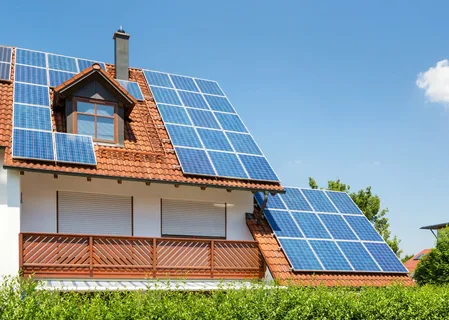
If you want to install solar panels in your home, you’ll want to take a few steps before you start. Some of these steps include assessing your roof and solar panel needs—other considerations include the average cost to install solar panels in Texas and location.
Table of Contents
Cost
Choosing the most efficient solar panel for your needs is essential. Monocrystalline panels produce the most energy per square foot. They are also very aesthetic and last a long time. However, they are less efficient than polycrystalline panels and require more installation space.
Most solar manufacturers offer 25-year product and production warranties. This ensures you’ll get your money’s worth since you’ll be able to use your solar panels for at least 25 years. It’s important to note that you’ll still need to pay for maintenance after that period. This might include cleaning the panels twice a year and could easily cost you $400 or more.
Size
There are many different types of solar panels on the market. Each panel has a different size, but all consist of the same essential components: solar cells. Residential solar panels typically contain 60 cells, while commercial solar panels typically contain 72. Their sizes and weights can vary considerably. Choosing the right solar panel depends on how much energy you want to generate.
Residential solar panels are generally less than one ton. The average 60-cell solar panel weighs around forty pounds. A 10 kW solar system will add 1,260 pounds to the roof, while a 15 kW system will add 1,845 pounds to the roof. Manufacturers are constantly exploring ways to make solar panels more powerful and efficient. Manufacturers such as Bluetti Power have been at the forefront of solar innovation.
Position of Solar Panels on Your Roof
Before installing solar panels on your roof, you must determine the right location for mounting them. You can use a plan to help you determine where to place them. The plans will tell you where to place rails and the distances of the panels from them. You must follow these measurements.
It would help if you also considered the slant of your roof. If your roof is south-facing, you should face your panels in that direction. This will ensure the best exposure to sunlight throughout the day. Consider pole mounts or surface-mounted panels if your roof faces a different direction.
The placement of solar panels on your roof is crucial because they will add weight to the structure of your roof. Make sure your roof is stable and not too steep or uneven. If you have a flat roof, consider installing solar panels on the roof at an angle of 30 to 45 degrees so that they will receive maximum exposure to sunlight.
Maintenance
Solar panels can become inefficient with time, but there are steps you can take to maintain them properly. Firstly, inspect the panels for damage. Cracks and breaks can be repaired by laminating them. Secondly, watch for overheating and damage to the electrical components. The latter can lead to further damage to the panels.
It is also essential to inspect the panels for excessive dirt. Occasionally cleaning them will keep them in good condition, but it is advisable to hire a professional cleaner if the panels are severely dirty. These professionals can take care of the task efficiently and quickly. These steps will ensure that your solar panels last a long time and continue to produce energy efficiently.
It is essential to maintain your solar panels to get maximum benefits from them. You should periodically clean and inspect them.
Insurance Required For Installation
Before you start putting solar panels on your roof, you must understand what insurance policies you’ll need. Generally, the standard homeowner’s policy will cover any damage or theft to your home, but it may not cover solar panels. Contacting your insurance agent is the best way to determine if your policy will cover solar panels.
Depending on the size of your solar panel installation business, you’ll need to consider how much coverage you need. A general liability policy, for example, may provide up to $1 million in coverage. However, you can get an excess liability policy or umbrella insurance if you’d like more protection. Getting an umbrella policy may be a good idea if you install solar panels on your roof.



